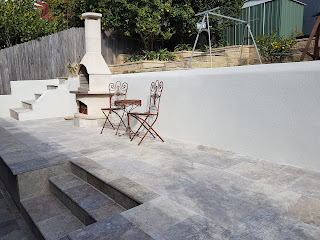All about Travertine Tiles and maintaining them
Known for their classy shades and luxurious appearance, Travertine Tiles are popular across the UK, U.S, Europe, Australia, and Japan, among others. The Tiles stand out with their elegant demeanor without dominating other elements in the background. Due to this characteristic, they are often confused with marble. Because of their density and solidity, they are used in indoor floor applications, shower places, walling, backsplash, facades, and decorative accents.
Ideally, Travertine Tiles have a thickness of 12mm. They usually fall
into two major classifications, namely unfilled and filled. As the name
suggests, Unfilled Travertine has natural holes on the surface which give an
organic look to the stone besides offering slip-resistance. The holes can be left
unfilled if one wants a rugged look.
Filled Travertine is meant for indoor use as the holes are filled with
resin to avoid dust or moisture from penetrating. Tiles used indoors are honed,
meaning they are smoothened to a matte finish. This makes the stone comfortable
to walk on and smooth to touch.
Like all natural stones, Travertine Tiles are also sealed to create a
shielding layer against moisture, dust, debris, bacteria or fungi, and other
kinds of damage. Sealing also helps tiles retain their colour, luster, and
texture. If installed and maintained properly these Tiles last several decades.
Occasional cleaning with a damp cloth does the job well. You should avoid
cleaning agents with citrus or vinegar as they can penetrate the surface and
cause irreparable damage to the tiles. Additionally, you should keep away from
pH-neutral substances to remove stains.
With proper care and regular maintenance, Travertine outlasts the life
of buildings. Sit back and soak in the calmness as these tiles allure you with
their charm.



Comments
Post a Comment